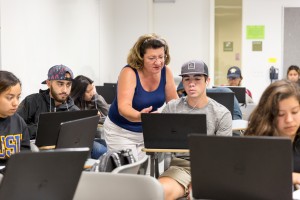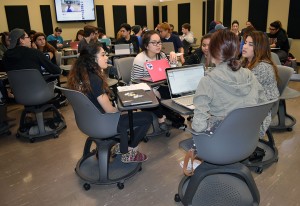This is the time in the semester where you become aware of students who are struggling in your course. Reaching out to students in the middle of the semester is a proven effective way to re-engage them in the class, increase learning of the content, and ultimately increase their academic success. With this Faculty Matter Tip, we lay out several different ways to reach out and support those students. In addition to the material below, we would like to cordially invite you to a coffee break on Tuesday to talk about student success services on campus and strategies to connect students to those resources. The session will be Tuesday, Oct. 11, from 3:30 to 4:30 p.m. in IRC 210. Please RSVP.
Progress Reports:
Last Thursday, Student Academic Success sent out requests to some faculty for progress reports on some students. If you have these students in your class, you would have received an email with the subject header “Fall 2016 Progress Reports”. Please take the time to read and respond to that email.
This is a request for your help in identifying students in your class who may be in jeopardy academically and might benefit from extra support. We realize that your time is valuable and your prompt participation in this request allows us to provide appropriate and effective academic support for the students who might be at academic risk.
In addition, you have the ability to proactively alert us to any students who are struggling in your class. Through Spartan Connect, you can bring these students to the attention of our staff advisors who will reach out to the student. Directions on how to obtain an account and issue an alert on students are available online.
Connecting Students to University Support:
Below are some places on campuses where students can get tutoring or attend academic success skill workshops. You can highlight these resources to all students by mentioning them at the start of class, posting them on Canvas, or emailing them to the class. You can also pass this information on to particular students who you see struggling. Send them an email or Canvas message with the resources and a note encouraging them to both take advantage of these resources and to come and see you in office hours.
Peer Connections provides one on one appointments for peer mentoring and tutoring. They also offer several workshops a month on academic success skills. The Writing Center offers one on one tutoring for writing, online resources, and workshops. The Communications Center has drop-in and one on one appointments for oral and written communication. There are also numerous tutoring centers in the departments and colleges listed on the Tutoring Hub.
Educational Counseling provides one on one appointments, workshops, and online resources for academic success. The library has technology workshops. In addition, the library offers resources to support students in research, including details online to help the student define the type of resources and help they need and how to connect with a librarian. The library also has laptop and I-pad rentals, meeting rooms that can be reserved for teamwork or collaboration, and online resources on referencing and literature reviews and tutorials on plagiarism. The Spartan Success Portal has a range of online, academic success modules.
While we know this is an incredibly busy time of the semester, the time you spend now reaching out to students and connecting them with support is an investment that will pay off in their improved academic success. You can read all previous Faculty Matter Tips under the “Faculty Matter” category on the blog as well as share your own thoughts and ideas in the comments section.

